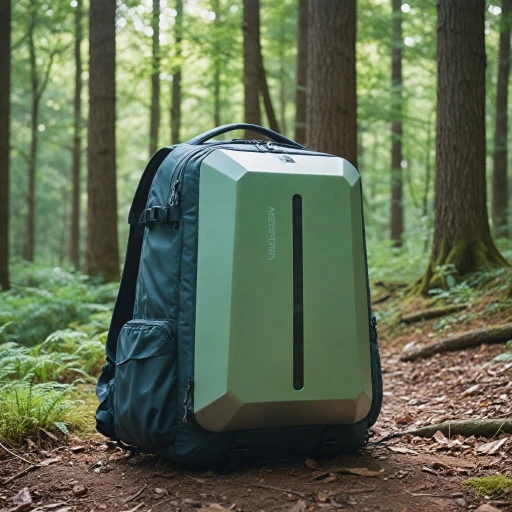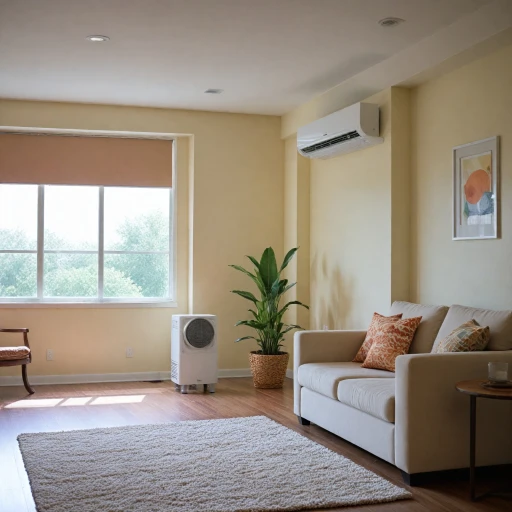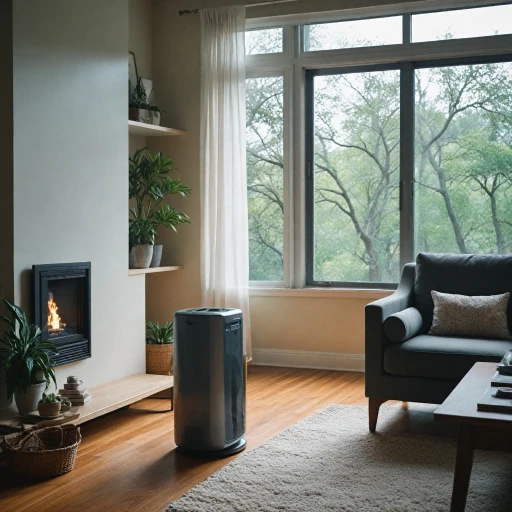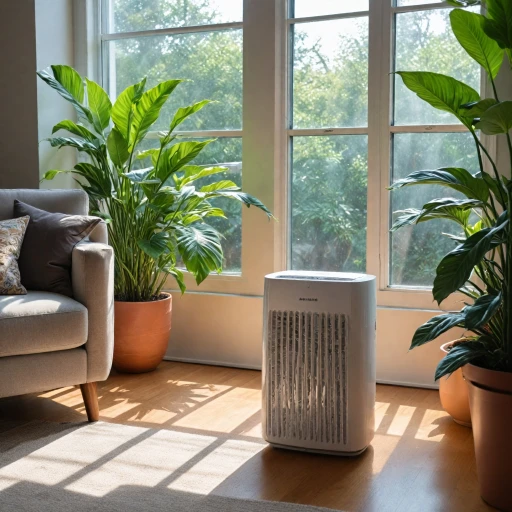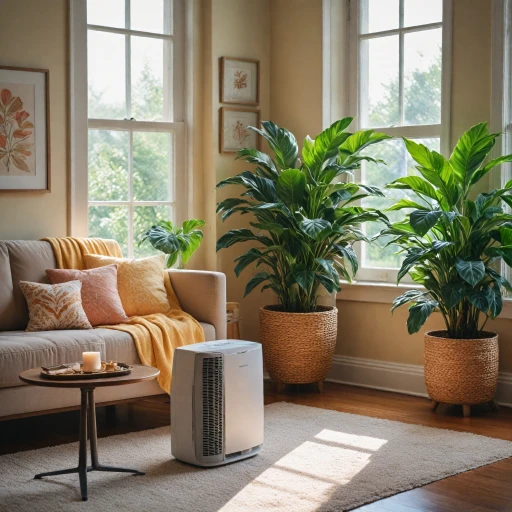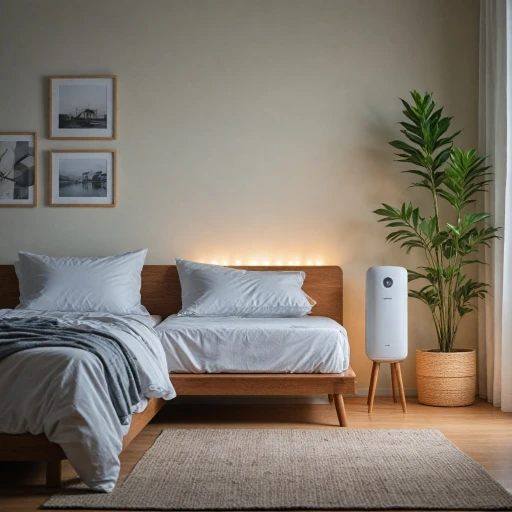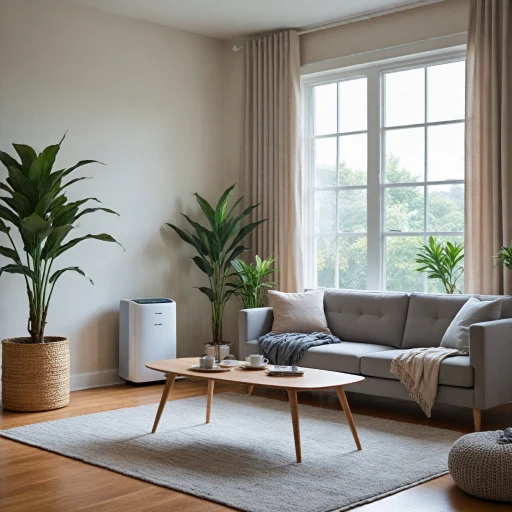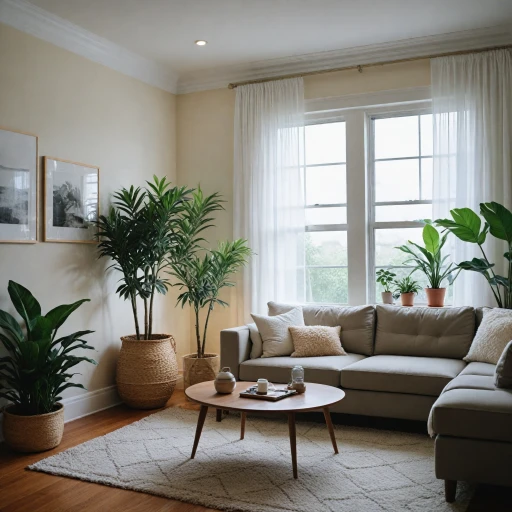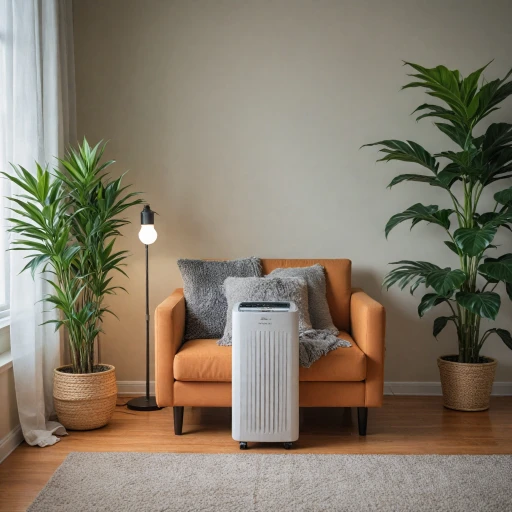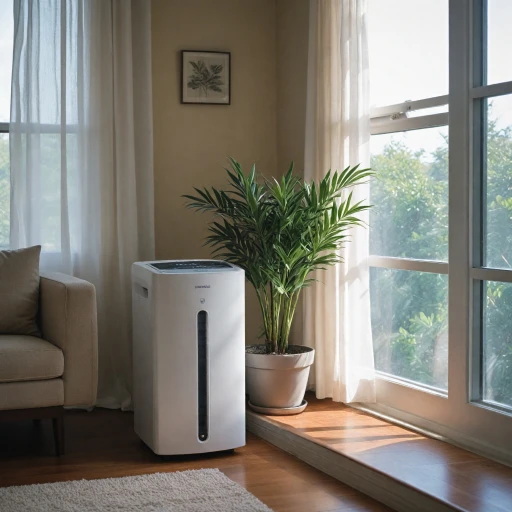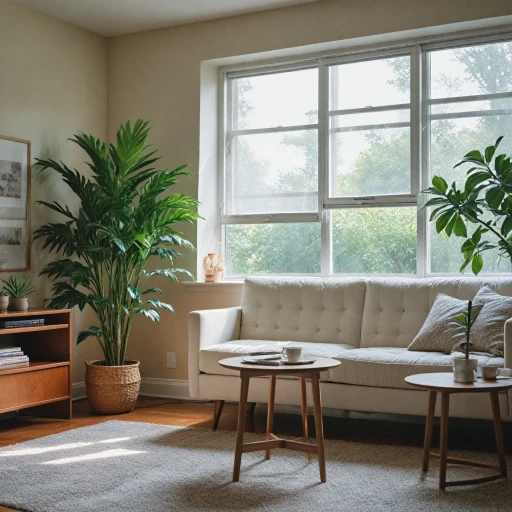
Understanding Portable Heating and Cooling Units
The Versatile World of Portable HVAC Systems
Navigating the world of portable air conditioners involves understanding the variety of models available today. These units are designed to provide flexibility and efficiency in managing indoor climate. Unlike central air systems, portable models can be conveniently moved from one room to another, offering personalized comfort where you need it most. Portable air conditioners typically come in two primary designs: single hose and dual hose. The single hose design draws in air from the room, cools it, and then expels warm air outside through the hose. Dual hose models, like the Whynter ARC series, offer an improved efficiency by using one hose for intake and another for exhaust, reducing pressure and increasing cooling performance. Many modern units, such as the Midea Duo, incorporate smart technology, allowing remote control operations through smartphone apps. This feature allows users to adjust settings like fan speed, temperature, and even schedule operation times, offering a customized and energy-efficient cooling experience. When considering a portable air conditioner, there are important factors to weigh, such as BTU rating and size specification. To cool a room effectively, choosing the right BTU rating is essential. Portable ACs typically range from 8,000 to 14,000 BTU ASHRAE ratings, accommodating different room sizes. A unit's portability often means it is ideal for spaces without window accessibility like attics or garages. Additionally, some models are equipped with heater functions, offering dual capabilities to serve as both an air conditioner and a heater. This proves particularly cost-effective, enabling year-round comfort from a single unit. Consumers often appreciate this versatility, along with features like multi-directional vents and easy installation kits that accompany most portable units. Finding the right portable air conditioner often comes down to assessing features like price, BTU rating, and the type of hose design offered. For more insights into the advantages of ductless models, which enhance room flexibility and convenience, check out this detailed exploration. Such resources provide a comprehensive understanding of how portable air solutions are tailored to meet diverse cooling needs.Benefits of Portable Units
The Versatile Advantages of Portable Cooling and Heating Solutions
In today’s fast-paced world, the demand for convenience and versatility in home appliances has never been higher. Portable heating and cooling units stand out in this regard, offering several benefits that traditional systems might not provide. For starters, any portable air conditioner or heater unit can be moved effortlessly from one room to another. This flexibility allows users to adjust their environment based on individual comfort needs throughout the day, or even to save on energy costs by only using the device in rooms that are occupied. Such portability is particularly beneficial in homes without central air conditioning or in spaces that require supplementary climate control. Moreover, these portable models often integrate advanced technology to enhance user experience. Many come equipped with smart features, such as a remote control or app connectivity, enabling easy adjustments of temperature settings. With models like the Midea Duo and Black Decker, users can benefit from dual hose or single hose designs depending on their space requirements and effectiveness needs. A standout feature of some of these units is their capacity to function as both an air conditioner and a heater, making them ideal for year-round use. The Whynter ARC line, for example, combines portability with powerful heating and cooling capabilities, and is particularly efficient with its dual hose system that maximizes BTU cooling potential. Price and ease of installation also make portable acs an attractive option. Unlike window air conditioners, which often require specific window types and installations, portable units usually demand less space, and their setup is typically straightforward. This makes them not only a convenient but cost-effective option, particularly for renters or those in temporary accommodations. Indeed, aside from possibly needing a window for an exhaust hose, many portable air units like the inverter models and mini splits, offer easy placement and immediate climate control—attributes that are particularly appealing in dynamic living environments. For additional insights into how these units perform across various settings, consider exploring similar technologies accessible through mobile evaporative cooler insights. In conclusion, portable air conditioners and heaters deliver convenience and efficiency in diverse domestic spaces, and this growing trend shows no signs of slowing down.Challenges and Limitations
Addressing Potential Drawbacks
When choosing a portable air conditioner or heater, it's important to be aware of a few challenges and limitations that come with these versatile units. Understanding these issues will help you make an informed decision and manage expectations effectively. One common challenge is the cooling capacity. It's crucial to select a unit with the appropriate BTU rating for your room size. A model with too low a BTU rating might not efficiently cool the room, while one with too high a rating can waste energy and increase your electricity bill. Carefully review the BTU ashrae standards to ensure optimal performance.Considerations for Installation
Installation can pose questions, especially with considerations like hose design. Portable air conditioners generally come in two main types: single hose and dual hose. While single hose units are easier to install, they can be less efficient in cooling as they use indoor air for operation. Dual hose models, such as the Whynter ARC series, offer a more efficient cooling solution by using one hose for intake and another for exhaust, but they may require more setup effort.Efficiency and Noise Levels
The efficiency of a portable air conditioner can affect not only performance but also running costs. Inverter technology, commonly seen in mini split systems, is being adapted to portable units, allowing for consistent and energy-efficient operation instead of the traditional on-off cycling. This leads to quieter performance, reducing the noise level significantly, enhancing comfort in your room. Noise is another factor to consider, as some units can be quite loud. Consider models known for quieter operation, such as the Midea Duo or Black Decker, to enhance comfort without the undue disturbance of a roaring fan.Price Sensitivity and Budget Considerations
Price can be a barrier when opting for portable cooling units. While higher-end models may offer impressive features like smart controls, remote control operations, or advanced cooling technologies, they come at a higher cost. Balancing price against features and performance is necessary to ensure you're making a cost-effective choice. For more insights on cost considerations and potential savings, check out this guide on exploring the potential savings of portable air heaters and coolers. Ultimately, being aware of these potential drawbacks and weighing them against the benefits discussed in previous sections is essential for selecting a unit that fits well with your specific needs and circumstances.Choosing the Right Unit for Your Needs
Navigating the Array of Options for Portable Units
When it comes to picking the right portable cooling or heating unit, there are several factors you should consider to ensure you make an informed choice. Here's a breakdown to help guide your decision-making process:
- Room Size: Consider the size of the room where you'll place the unit. Portable air conditioners, for example, are rated in British Thermal Units (BTU), which indicate their cooling capacity. A model with higher BTUs, like a 14,000 BTU unit, can effectively cool a larger space, whereas a 5,000 BTU model is suitable for smaller rooms.
- Single vs. Dual Hose: Single hose units are easier to install and are typically more compact, making them a fit for smaller spaces. Dual hose systems, like the Whynter ARC models, provide more efficient cooling and are preferable for larger rooms.
- Window Installation: Examine whether your chosen unit requires window installation. Some portable air conditioners come with a window kit for venting purposes, crucial for maintaining efficiency and performance.
- Energy Efficiency: Opt for units with inverters or smart technology features, like the Midea Duo, which can save energy and reduce electricity bills. Check for energy ratings and consider models equipped with an energy-saving mode.
- Versatility and Features: Modern portable units offer a variety of functions. For instance, many models act as both an air conditioner and a heater, making them useful year-round. Features such as remote control paves for easier operation, and built-in timers can enhance convenience.
- Price Considerations: Portable units range in price based on capabilities and features. While more affordable models might suffice for temporary use or smaller spaces, investing in a high-end unit with a good BTU rating can offer long-lasting benefits.
- Noise Levels: Noise is an essential factor to consider, particularly if the unit will be in a bedroom or workspace. Models like the Black Decker are known for low noise levels, ensuring a quiet environment.
Ultimately, the right choice will depend on your specific needs, room dimensions, and budget. Careful consideration of these elements will help you find a unit that balances performance with efficiency, ensuring comfort in any season.
Maintenance and Care Tips
Maintaining Your Portable Air Conditioner
Proper maintenance and care are crucial to ensuring the longevity and efficiency of your portable air conditioner. With regular attention, you can keep it running smoothly and avoid unexpected issues during those hot summer days.
Firstly, always refer to the manufacturer’s guide for specific maintenance tasks tailored to your particular model. While different units, such as the Midea Duo or Whynter ARC, may have unique features, general care principles apply across most air conditioners.
- Cleaning the Filters: Most portable air conditioners have washable or replaceable filters. Keeping these clean is crucial as dust and particles can clog the system, impairing its cooling capabilities. Check and clean the filters every two weeks, especially if the unit is frequently in use.
- Inspecting the Hose: The hose design plays a vital role in the efficient transfer of warm air. Whether you have a single or dual hose system, regularly inspect for any signs of damage or blockage.
- Dealing with Condensate: Depending on the humidity levels in your area, your portable air conditioner might collect condensate. Many models, such as those with a self-evaporative feature, minimize the need for manual draining; however, ensure the drainage system functions properly to prevent leaks.
- Checking the Remote and Controls: Occasionally, inspect the remote control and other controls for responsiveness. Replacing batteries when needed ensures you can seamlessly adjust temperature settings and fan speeds.
By following these maintenance practices, your portable air conditioner will not only provide effective cooling during the hotter months but also extend its overall lifespan. Whether you have a window air conditioner, mini split, or full-fledged portable unit, maintaining it well will save you from high repair costs down the line and maximize comfort in your living space.
Innovations and Future Trends
Revolutionizing Climate Control with Modern Technologies
In recent years, portable air conditioners have evolved substantially, embracing advanced technologies that enhance their efficiency and functionality. Here’s a closer look at some of the latest innovations that are redefining the portable air conditioner market.- Smart Features: Modern portable air conditioners are increasingly integrated with smart technology, allowing users to control the unit through smartphones or tablets via apps. This integration offers improved convenience by enabling remote control of the air conditioner’s settings, schedules, and modes, delivering customized cooling and heating solutions tailored to individual preferences.
- Inverter Technology: Inverter technology plays a pivotal role in enhancing the energy efficiency of portable air conditioners. By adjusting the compressor speed to the desired temperature, units equipped with this technology, like some models of mini-split systems, offer more precise temperature control, reduced energy consumption, and lower operational noise levels.
- Dual Hose Design: While single hose portable ACs remain popular for their simplicity, dual hose models like the Whynter ARC series have carved a niche for themselves due to their enhanced cooling efficiency. The dual hose system ensures better air pressure regulation, making it ideal for maintaining consistent temperatures, even in larger rooms.
- BTU Innovations: The British Thermal Unit (BTU) rating of an air conditioner is a critical factor in determining its cooling efficiency. Recent advancements have aimed at optimizing this measure, focusing on delivering powerful cooling in compact units. For instance, a 14,000 BTU portable AC with a sleek, compact design can efficiently cool medium-sized rooms, making it a popular choice for various spaces.
- Eco-Friendly Refrigerants: Environmental concerns are steering the development of more eco-friendly refrigerants used in portable air conditioners. Many units are now designed to use refrigerants that have a lower Global Warming Potential (GWP), contributing to greener energy solutions without compromising performance.
- Enhanced Air Quality Features: Many portable air conditioner models are now equipped with air purification features such as built-in air filters, ionizers, or UV-C lighting technology to improve indoor air quality. These features can be particularly beneficial for households concerned about allergens and indoor pollution.
- Quiet Operation: The pursuit of quieter air conditioners has led to innovations aimed at minimizing operational noise. Such models are ideal for bedrooms or workspaces where quiet environments are paramount for comfort and productivity.

